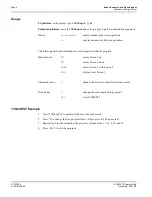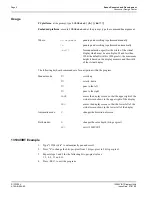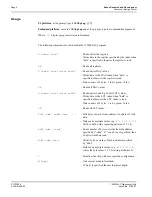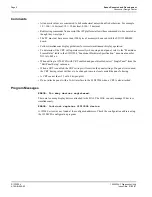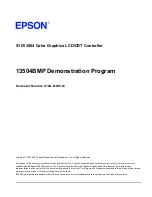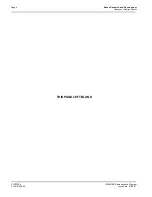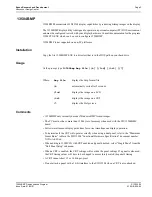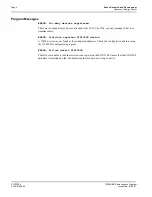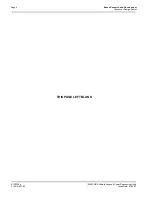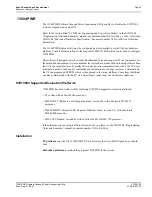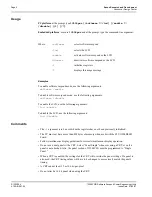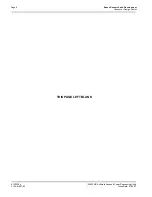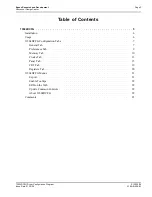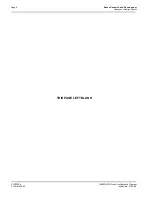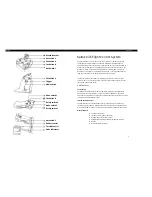
Epson Research and Development
Page 5
Vancouver Design Center
13504PLAY Diagnostic Utility
S1D13504
Issue Date: 01/02/01
X19A-B-005-05
P 1|0
- 1 = set/0 = reset hardware suspend (power mode).
- This feature only works on the S5U13504B00B ISA
evaluation board while operating in the x86
environment.
- Do not use with the S5U13504B00C evaluation board.
H [lines]
- Halts after lines of display. This feature halts the
display during long read operations to prevent data
from scrolling off the display.
- Set 0 to disable.
Q
- Quits this utility.
?
- Displays Help information.
13504PLAY Example
1.
Type "13504PLAY" to start the program.
2.
Type "?" for help.
3.
Type "i" to initialize the registers.
4.
Type "xa" to display the contents of the registers.
5.
Type "x 5" to read register 5.
6.
Type "x 3 10" to write 10 hex to register 3.
7.
Type "f 0 ffff aa" to fill the first FFFF hex bytes of display memory with AA hex.
8.
Type "f 0 1fffff aa" to fill 2M bytes of display memory.
9.
Type "r 0 ff" to read the first 100 hex bytes of display memory.
10. Type "q" to exit the program.
Scripting
13504PLAY can be driven by a script file. This is useful when:
• there is no display output and a current register status is required
• various registers must be quickly changed to view results.
A script file is an ASCII text file with one 13504PLAY command per line. All scripts must end with
a “q” (quit) command.
On a PC platform, a typical script command line is: “13504PLAY < dumpregs.scr > results.”
This causes the file “dumpregs.scr” to be interpreted and the results to be sent to the file “results.”
Example: Create an ASCII text file that contains the commands
i
,
xa
, and
q
.
; This file initializes the S1D13504 and reads the registers
; Note: after a semi-colon (;), all characters on a line are ignored
i
xa
q


